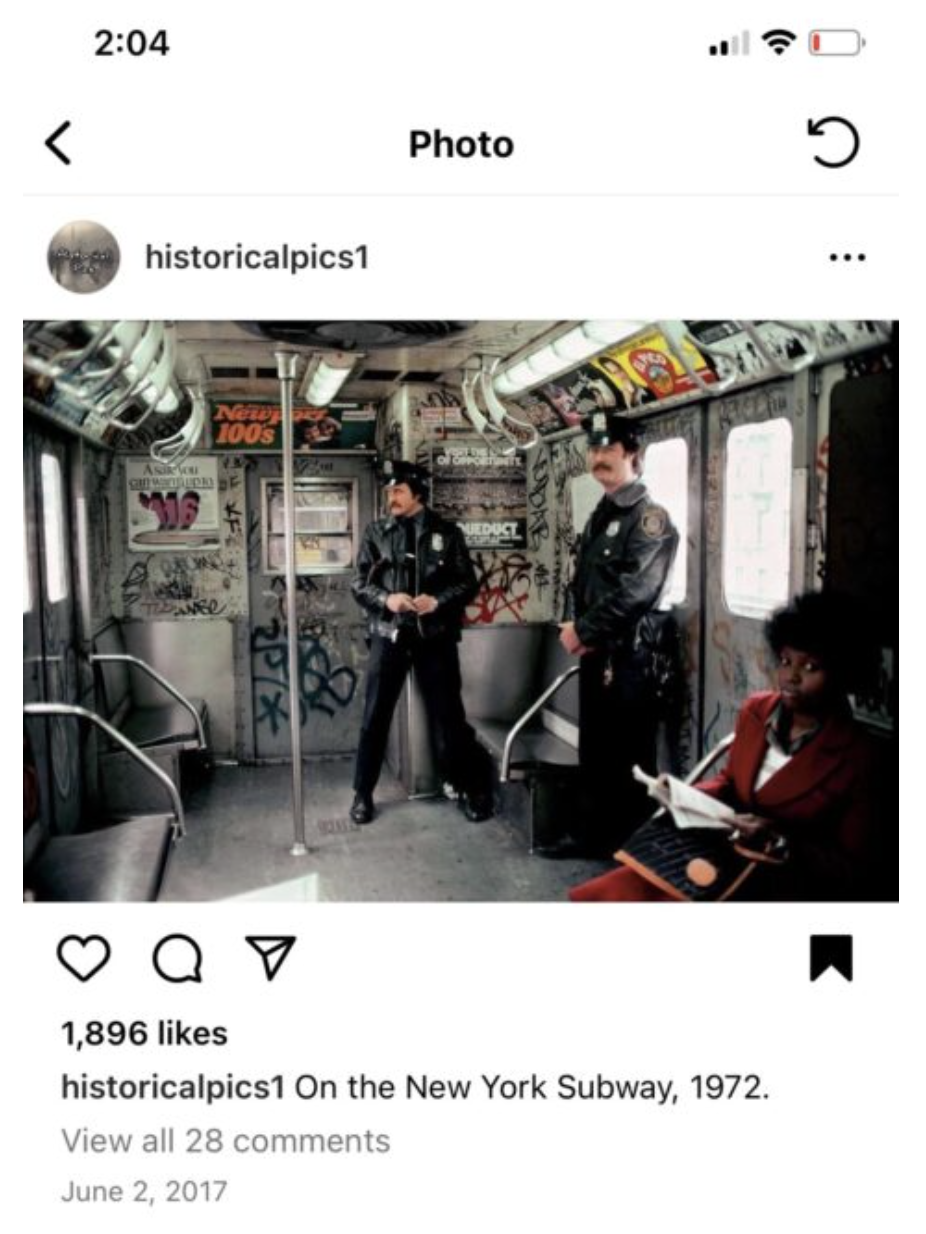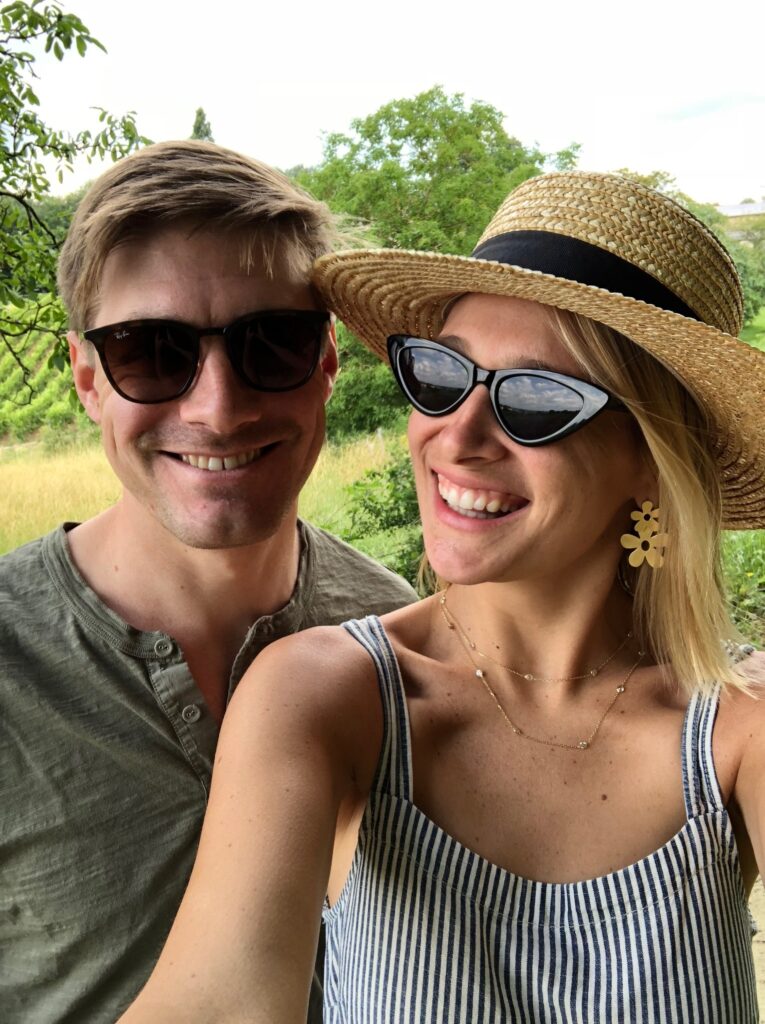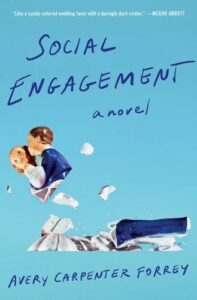
From This Day Backward: Avery Carpenter Forrey on Social Media and Memory
“If we can access memories with our thumbs, why bother accurately searing them into our brains?”
The night light of my phone casts our bedroom in dim relief: the dresser we picked out together topped with framed wedding pictures, our bodies reduced to a topographical swell under the duvet, the pillow I’d screamed into earlier that night adrift on the floor. My husband is already asleep. Our fight was exhausting and almost comforting in its predictability; it dug into the grooves of a well-worn issue.
As he snores, I thumb to the shared album with our names joined by an ampersand. This is my dumping ground for happy couple highlights, a museum where I can play docent until I fall asleep. Look at us with matching charcoal face masks and wide-eyed stares.
There we are, washed with magic hour at a rooftop party, then delirious at the summit of a hike in Colorado. I captured these small moments reflexively, and out of a larger desire to press time down like reminders on a refrigerator. Squares on a grid. The edges of our argument soften as I scroll.

Externalizing experiences—clicking, writing, filtering, posting—affects our recall. One study found that people who documented an experience performed 10% worse on memory tests. Researchers concluded that the culprit was probably the fissure between external and internal modes of storage, otherwise known as the Google effect. When a fact or memory is recorded externally, we don’t create a full internal record. Shared albums and search bars eclipse intangible ghosts. If we can access memories with our thumbs, why bother accurately searing them into our brains?
Fiction, less concerned with factual accuracy, operates at an intersection between recollection and invention. My debut novel, Social Engagement, opens with a similar scene as this essay: the protagonist, Callie, turns to photos on her phone after a fight with her husband on their wedding day, using the breadcrumbs of Instagram and her camera roll to trace the relationship’s arc.
The belief that most fiction is semi-autobiographical assumes that writing is an act of disguised remembering rather than imagined creation. In her novel The Vanishing Half, Brit Bennett writes “eventually, remembering turned into imagining; how slight the difference was between the two.” Write what you know becomes write what you remember becomes write what you imagine. My phone, stuffed with imprecise yet evocative photographic evidence, is then the ideal portal for writing—for turning reality into make-believe.

A picture of my then-fiancé in our old apartment: he’s wearing a velvet-soft gray T-shirt and sitting next to an open chocolate box and a tangle of my research materials. Back then, I was writing a novel set in a 1980s tattoo parlor. The research and our relationship were linked, because a picture he DMed me inspired the project. The @historicalpics1 image of a heavily graffitied subway, taken before I was born, was far from a personal memory—but this portal to third-person imagining morphed into a first-person voice.
In real life, the opposite progression can occur. Roughly 90% of people report having at least one third-person memory, meaning they see themselves in the memory rather than seeing through their own eyes. This is common with distance—a childhood memory, for example, is an amalgamation of the event and its various retellings, molded into a Frankenstein both of and apart from the people who lived it.
When recalling the experience, you also recall what people have told you about the experience—the version in which you were inside the screen instead of controlling the joystick. Third-person memories are further triggered by moments that make us feel self-conscious, like giving a presentation, because you remember thinking about how you appeared to an audience. Social media, similarly, can make us characters in our recollections.

I pause at a selfie from a vineyard in France. I’m wearing a straw hat, he’s in round sunglasses. Our smiles are huge, with the bruised tinge of red wine. I do not remember what we drank or discussed; the details have slipped through fingernail-thin cracks between photos in this shared album. I do, however, remember how I captioned the picture on Instagram stories. “Aged for 29 years in a variety of containers, including exposed brick. Tasting notes: melon, ginger, hint of chlorine and freshly cut hair.” I gave us the sommelier treatment and the crying-laughing emojis poured out in response. My memory is not only affected by my social media performance; it’s consumed by it.
Days later, my husband went home and I headed to Paris for a 10-day writing residency as part of an MFA program. This time, I was workshopping a new project. The tattoo book had become untenable, partly because the gap between my memories and my fictional world was too wide to bridge. I feared I’d hit the limits of my imagination.
My phone, stuffed with imprecise yet evocative photographic evidence, is then the ideal portal for writing.
Instead of drawing inspiration from a historical image, I dipped into our collective, contemporary well: Instagram. I’d been having deja-vu from the influx of weddings populating my feed, and started writing about the unique, messy stories behind the nearly identical curated images.
“Do you need all the social media?” a classmate offered. “It’s risky to structure a book like this. What if we move on, Instagram gets replaced?”
I’d hear versions of this critique many times, warnings that my book would become dated by technological advances. But if the medium affects how we remember, why shouldn’t it also affect how we narrativize those memories? I’ve found my social media and camera roll are ripe for storytelling, for using the frame to envision what exists outside its bounds. Instagram vs. reality becomes invention vs. reality, with the seeds of the past pushing into a fictional future.
In my book, main character Callie develops a secret Instagram project in which she turns wedding pictures from her social feed inside out, sketching the anatomies beneath all the white silk and lace. While I was struggling with the historical fiction book, I also found creative solace via Instagram. I began uploading pictures from my everyday on a secret account and writing short stories about them in the captions—main character energy applied literally.
On my public feed, I discovered that when I memorialized an event, it often became more accessible. Like with the vineyard picture, these memories sometimes foregrounded the trappings of social media—the caption I wrote, the filter I chose—but I usually had a clearer orientation in my story because I’d chosen to tell it, or a version of it, out loud.
Taking a picture prioritizes a future moment (when you’ll look back or post) over the moment itself. In writing my debut, I discovered that externalizing our memories may prioritize something less objectionable and more useful: visual transportation, or the ability of an image to vault us backward into a lived experience and forward into an imagined one. Callie’s late-night photo binge proceeds and ends much differently than mine, but like her, I used the still life at my fingertips to illuminate a moving world inside my head.

“Good morning, love,” my husband says, towering above me instead of in my eyeline onscreen. Milky light filters through our blinds. He’s dressed for work and already dispensing details about his day: the dolphin noises from our infant daughter’s monitor, his morning dog walk, a big meeting on his calendar. His optimism before 7 AM either buoys or annoys me, depending on my mood. Today, I’ve completely forgotten about our fight. I look at him and see the red wine smile, the charcoal mask, the tux at a friend’s wedding, the face I beamed at on a hike.
“Wait,” I say as he turns to walk out the door. I thumb to the gray camera icon and click.
__________________________________

Social Engagement by Avery Carpenter Forrey is available from Mariner Books, an imprint of HarperCollins Publishers.
Avery Carpenter Forrey
Avery Carpenter Forrey is a writer, editor, and creative consultant. She was a founding team member and Managing Editor at theSkimm, where she cowrote the #1 New York Times bestseller How to Skimm Your Life. She holds an MFA in fiction from NYU, and her work has been published in The Cut, GQ, and elsewhere.



















